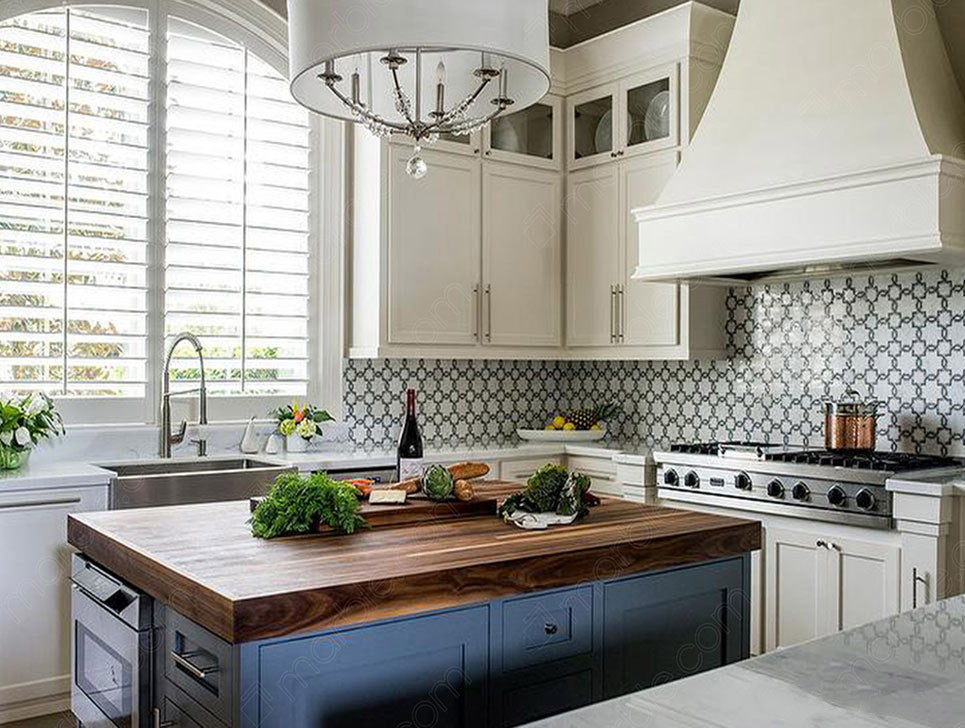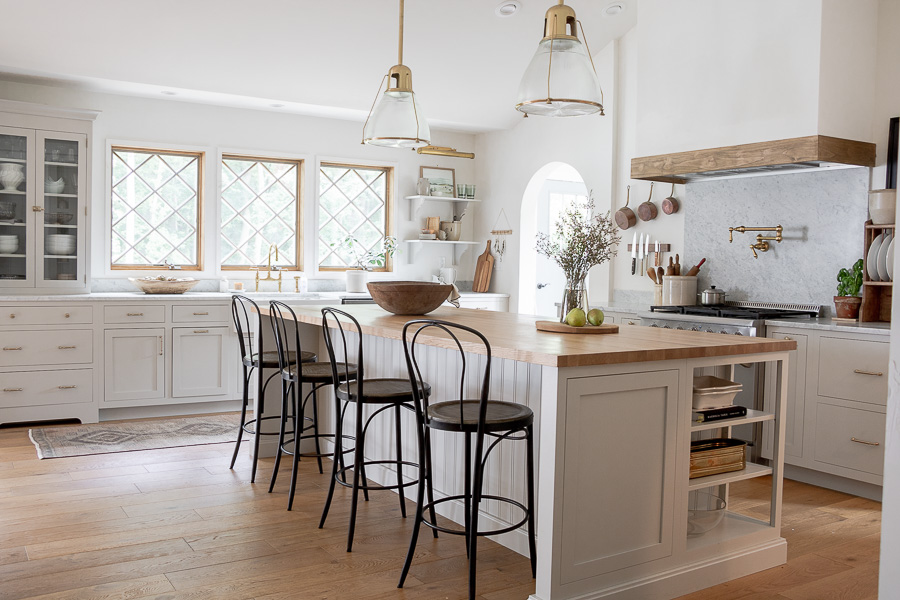Marble and butcher block countertops represent two distinct yet popular choices in the realm of kitchen surfaces, each offering unique characteristics that cater to different preferences and functional needs. Marble countertops, often associated with timeless elegance, are crafted from natural stone, providing a luxurious and sophisticated appearance. The unique veining patterns and color variations inherent in marble make each countertop a one-of-a-kind piece, adding a touch of exclusivity to kitchen spaces.
While marble is celebrated for its aesthetic appeal, it’s essential to acknowledge that it requires proper care and maintenance. Being a porous material, marble is susceptible to staining, especially from acidic substances like citrus juices and vinegar. Regular sealing is recommended to protect the surface and maintain its pristine look. Despite these considerations, many homeowners find the beauty of marble countertops well worth the effort in maintenance.
In contrast, butcher block countertops, typically made from hardwoods like maple, oak, or walnut, bring a warm and inviting feel to kitchens. The natural grain and warmth of wood create a cozy atmosphere, making these countertops an excellent choice for those seeking a more rustic or traditional look. Butcher block also provides a forgiving surface for knives, reducing the impact on blades compared to harder materials.

One of the notable advantages of butcher block countertops is their versatility. They can be easily customized to fit various kitchen styles, and homeowners have the flexibility to choose different wood species and finishes. Additionally, the surface can be sanded and refinished if it incurs scratches or other wear over time, contributing to the longevity of the countertop.
Maintenance for butcher block countertops involves periodic oiling to keep the wood hydrated and protected from moisture. While wood is generally more forgiving than marble when it comes to stains, it’s still essential to wipe away spills promptly. Regular oiling not only enhances the appearance of the wood but also forms a protective barrier, preventing it from drying out or cracking.

In terms of functionality, butcher block countertops offer a practical surface for food preparation. The softness of wood is gentler on knives, making it an ideal choice for cutting and chopping. However, it’s important to use cutting boards to avoid unnecessary wear and maintain the countertop’s integrity.
The choice between marble and butcher block often comes down to personal preferences and lifestyle considerations. Marble countertops, with their luxurious aesthetics, are favored by those who prioritize a sophisticated look and are willing to invest time in maintenance. On the other hand, butcher block countertops appeal to those who appreciate the warmth of wood, desire a more casual ambiance in their kitchen, and prefer a surface that can be easily renewed.
While both materials have their strengths, it’s worth noting that they also have their vulnerabilities. Marble is more prone to scratching and staining, while wood can be damaged by excessive moisture and is susceptible to heat. Homeowners need to consider their cooking habits, maintenance preferences, and desired aesthetic when making the decision between marble and butcher block countertops.
In recent years, there has been a growing trend toward combining materials in kitchen design. Some homeowners opt for a mix of marble and butcher block, strategically placing each material to capitalize on its strengths. For example, marble may be used in areas where a durable and stain-resistant surface is essential, while butcher block is incorporated into designated food preparation zones for its practicality and warmth.

Whether choosing marble, butcher block, or a combination of both, it’s crucial to understand the characteristics and maintenance requirements of each material. Both options bring a unique charm to kitchen spaces, and the decision between them depends on the homeowner’s lifestyle, design preferences, and willingness to invest in maintenance for the desired aesthetic and functionality.
Modern Farmhouse Kitchen Design – Home Bunch – An Interior Design

Kitchen Island withMmarble and Butcher Block Countertop

Kitchen Island Benefits from Mixing Wood and Stone Countertops

Cost of Butcher Block Countertops vs Granite Marble.com

Honest Opinion on Carrara Marble Countertops – Seeking Lavender Lane

Walnut with Sapwood Kitchen Island Butcherblock in Newton, MA

10 Countertop Mashups for the Kitchen

Related articles:
- Teak Butcher Block Countertops
- Order Butcher Block Countertops
- What To Seal Butcher Block Countertops With
- Types Of Butcher Block Countertops
- How To Make Your Own Butcher Block Countertop
- Polyurethane On Butcher Block Countertops
- How Much Are Butcher Block Countertops
- White Cabinets Butcher Block Countertops
- What Is The Best Wood For Butcher Block Countertops?
- Lumber Liquidators Butcher Block Countertop Review